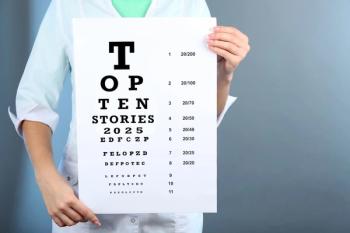
Center-involved DME resolves faster with faricimab than aflibercept
The data analysis indicated that patients achieved robust visual gains and central subfield thickness reductions with faricimab dosed every 8 weeks and with PTI dosing up to every 16 weeks. The gains were sustained through year 2 of the trials.
Faricimab, the first intraocular bispecific antibody inhibitor of angiopoietin-2 and vascular endothelial growth factor-A, was found to be safe and efficacious with durable effects in patients with center-involved diabetic macular edema (DME). Caroline Baumal, MD, presented the results of the analysis of the pooled data from the Phase 3 YOSEMITE and RHINE studies on behalf of the study investigators.
The YOSEMITE and RHINE investigated every-8-week dosing of faricimab or treat-and-extend personalized treatment interval (PTI) dosing out to every-16-week intervals.
The highlights of the data analysis indicated that patients achieved robust visual gains and central subfield thickness reductions with faricimab dosed every 8 weeks and with PTI dosing up to every 16 weeks. The gains were sustained through year 2 of the trials.
The vision gains were durable with faricimab dosed every 8 weeks in 60% or more of the patients in the PTI arms at week 96.
More patients achieved absence of DME and intraretinal fluid with faricimab dosed every 8 weeks and out to every 16 weeks compared with aflibercept (Eylea, Regeneron) dosed every 8 weeks through year 2. The absence of DME was achieved earlier and with fewer injections in more patients compared with aflibercept, Baumal reported.
The analysis revealed stable every-16-week durability with faricimab through 2 years.
Faricimab was well tolerated through the end of the study. No new or unexpected safety signals were identified in any of the studies. No cases of retinal vasculitis or occlusive retinal vasculitis were reported.
The ongoing RHONE-X long-term extensionstudy will generate 4-year data.
Newsletter
Don’t miss out—get Ophthalmology Times updates on the latest clinical advancements and expert interviews, straight to your inbox.













































